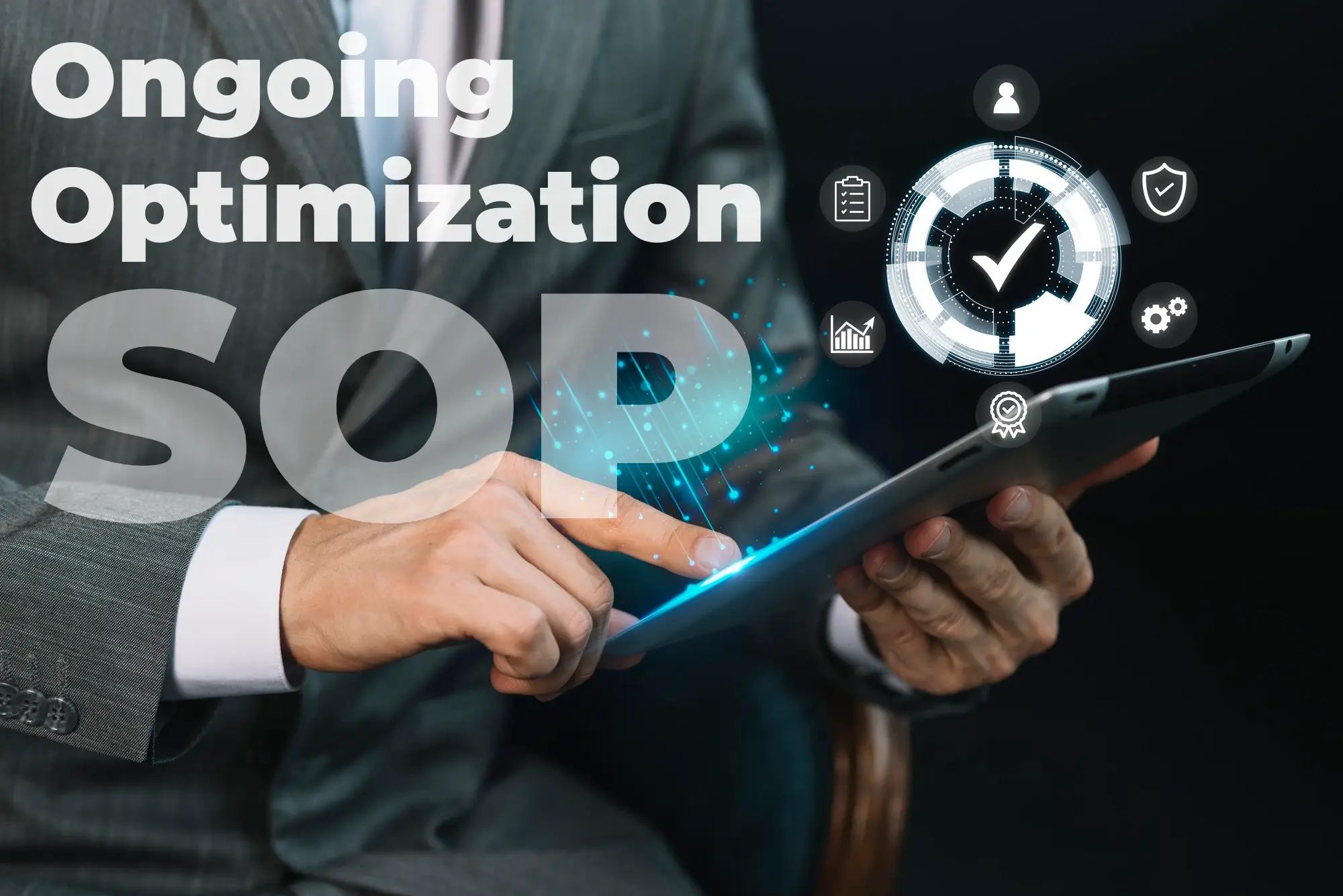Introduction:
Ongoing optimization is crucial for maintaining and improving the effectiveness of your SEO strategies over time. This Ongoing Optimization SOP provides a systematic approach to continuously refining and enhancing your SEO initiatives. By following this SOP, you’ll be able to stay ahead of competitors, adapt to changing search algorithms, and drive continuous improvement in your website’s search visibility and organic traffic.
Stay Updated with SEO Trends and Best Practices:
- Regularly follow industry blogs, forums, and reputable SEO resources to stay informed about the latest trends and best practices.
- Keep track of algorithm updates and search engine guidelines to ensure compliance.
Monitor Keyword Performance:
- Continuously monitor keyword rankings and organic search traffic using tools like Google Search Console, SEMrush, or Moz.
- Identify keyword fluctuations and opportunities for improvement.
Content Audit and Optimization:
- Regularly audit and update existing content to ensure it remains relevant, accurate, and valuable to users.
- Optimize underperforming pages by incorporating additional keywords, improving readability, and enhancing user experience.
Technical SEO Audits:
- Conduct regular technical SEO audits to identify and resolve any website issues or errors that may impact search visibility.
- Evaluate website speed, mobile-friendliness, crawlability, and indexability.
Backlink Monitoring and Outreach:
- Continuously monitor your backlink profile using tools like Ahrefs or Majestic.
- Identify and disavow toxic or low-quality backlinks that could harm your website’s reputation.
- Conduct ongoing outreach efforts to acquire high-quality backlinks from authoritative websites.
User Experience (UX) Optimization:
- Analyze user behavior metrics, such as bounce rate, time on page, and conversion rate.
- Implement UX improvements based on user feedback and analytics data to enhance engagement and conversion rates.
Local SEO Updates:
- Regularly update and optimize your local SEO efforts, such as managing and responding to customer reviews, updating business information on directories, and optimizing local landing pages.
Performance Monitoring:
- Continuously monitor and track key performance indicators (KPIs) related to SEO, such as organic traffic, keyword rankings, conversion rates, and engagement metrics.
- Use analytics tools like Google Analytics to gain insights into user behavior and website performance.
Competitor Analysis:
- Regularly analyze and monitor your competitors’ SEO strategies, keyword rankings, and backlink profiles.
- Identify opportunities for improvement and benchmark against your competitors’ performance.
Experimentation and Testing:
- Implement A/B testing and experimentation to optimize website elements, such as page titles, meta descriptions, CTAs, or landing page designs.
- Analyze the results and make data-driven decisions to improve performance.
Reporting and Communication:
- Generate regular reports highlighting key performance metrics and insights.
- Communicate the results, progress, and recommendations to stakeholders, such as management or clients.
Continuous Learning and Professional Development:
- Invest in ongoing learning and development to stay updated with the latest SEO techniques, tools, and strategies.
- Attend conferences, webinars, or training programs to enhance your SEO knowledge and skills.
Conclusion:
By following this Ongoing Optimization SOP, you’ll be able to drive continuous improvement in your SEO efforts. Regular monitoring, analysis, and adjustments based on data insights and industry trends will help you maintain a competitive edge in search rankings, enhance user experience, and drive sustainable organic growth. Embrace the mindset of continuous improvement and adaptability as you refine your SEO strategies over time.





